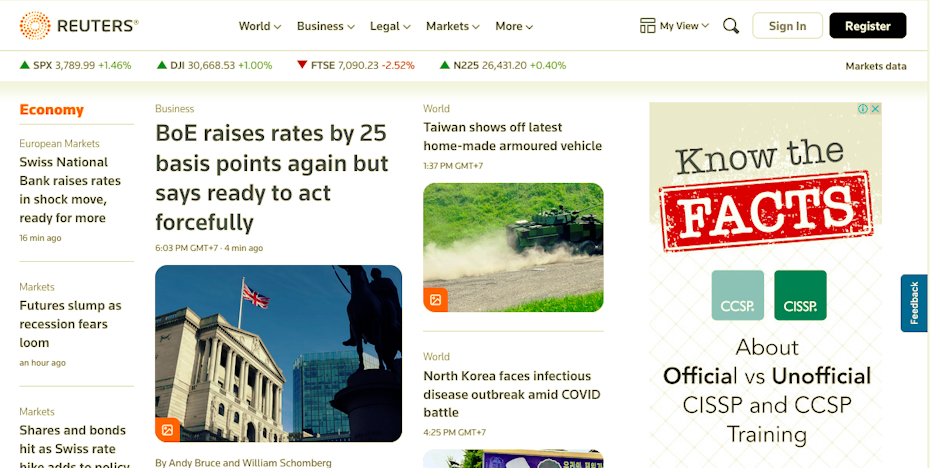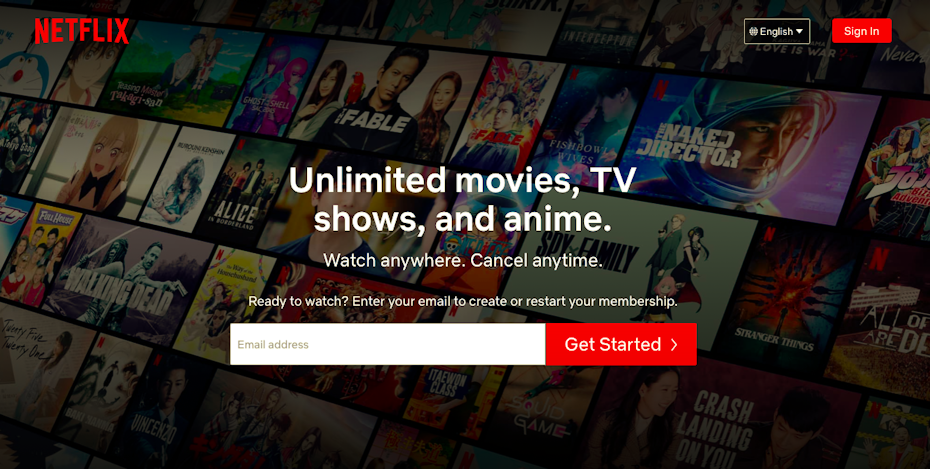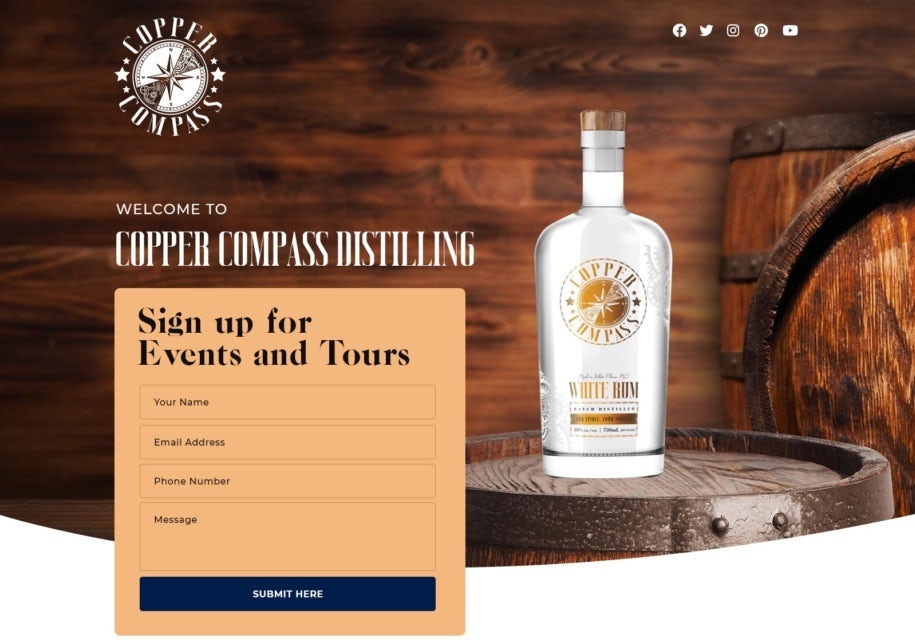Is One of the Most Popular Sevices on the Internet and Provides Easy Access to Website Pages
A website can be anything you want it to be… but chances are, you want it to be one of the most popular types of websites that already exist. When you look at the internet as a whole, most sites fall into one of these neat, clearly defined categories, each with its own guidelines and recommended features—and that makes it easier to hit the mark when designing your own site to fit the mold.
Below, we present the 9 most common website types and purposes (with the exception of social media sites, which are not as common to start from scratch):
- Business
- Ecommerce
- Blogs/news
- Portfolio
- Service provider (streaming, online tools, etc.)
- Landing page
- Wiki/database
- Forum
- Event
We explain what each category is used for and the key features to include, plus an overview of some design advice and an example to help you get started.
1. Business
—
Purpose
To inform prospective clients and consumers about your business and entice them to work with you
Features
- explanation of services
- company bio (typically the About page)
- company basics (address, phone number, email, etc.)
- mission statement
- address pain points and present value statement
- call-to-action for working together

The fact of the matter is that every 21st-century business should have a website. It's becoming a popular practice that the first step a person takes to learn about a business is checking out their website. For businesses offering new or unique services, a business website provides the opportunity to explain what they do; for traditional businesses, it's a chance to ease people's apprehension and verify that the company is legitimate.
A good business website presents all the essential information about a company, not only the fundamentals like an address or contact information, but also extra information like short staff bios or a mission statement. The idea is to get people familiar with your company and, in that process, enthusiastic about working with you.
In particular, business websites usually prioritize a call-to-action (CTA), such as a direct message widget, where the visitors can schedule a meeting or phone call, or at least get their questions answered by an actual human instead of a bot.. CTAs for direct messaging work well on business sites because they speed up the process of turning window shoppers into clients/customers, plus they elicit visitor actions when their enthusiasm is highest.
Business websites should always follow the style of the company's branding; if you're a tech company for young people, the style might use futuristic visuals and informal language, whereas if you're a law firm for established clients, you might want traditional visuals and professional language.
The important thing is that you answer any questions your visitors might have. For one thing, having a street address and contact information verifies that your company actually exists—in other words, you're not a scam.
But your potential clients and customers will have additional questions, such as where you stand on certain issues like using sustainable materials or where your products are manufactured. Your business website is your opportunity to address these issues on your home turf, rather than letting people draw their own conclusions.
2. Ecommerce
—
Purpose
To sell items online with a conventional retail method.
Features
- production gallery with high-quality images
- product pages
- secure checkout/transaction capabilities (with SSL certificate)
- account personalization options (wishlists, saved orders, profile pages, etc.)

Ecommerce sites are simply digital versions of brick-and-mortar stores, so they share the same goals and functions. You want to make your products as appealing as possible, but first you need to make sure you have the technical capacity to accept credit card transactions (or whatever payment methods you prefer, such as PayPal or crypto).
Retailers with a wide variety of products are going to need to invest more in their websites because each product should have its own individual page. Product pages give you the opportunity to encourage people to buy the product with enticing descriptions, photos, and even videos.
Moreover, the more products you offer, the more complicated navigation becomes. Not only do you need to find a layout to best display your products, but also it's recommended to include filtering or category tags to help visitors find what they're looking for.
Keep in mind that shoppers are more skeptical of buying online than in person because they can't examine the product firsthand. That's why visuals are so important: you want to use high-quality photos and videos that showcase the product from multiple angles to give the shopper a better sense of the actual product.
This is especially important for selling apparel since the shopper can't try on items. To compensate, try including a detailed sizing chart with measurements to give your customers more accurate understanding of how the clothes will fit.
3. Blogs/news
—
Purpose
To educate or inform the visitor about current events or specialized knowledge (like this article about web design on our 99designs blog).
Features
- article catalogs
- dedicated pages for each article
- categorization or tags for convenient browsing
- payment gateways and account capabilities, if applicable

Blogs and news websites are quickly replacing print media like newspapers and magazines. Most people prefer to get their news online (86% of American adults, according to Pew Research), and the fact that most sites are free doesn't hurt either.
Because each blog/news sites offers quite a few articles at a time, browsing and navigation are top concerns. Most sites use a tag or categorization feature that allows visitors to filter what kinds of articles they see, akin to newspaper sections like "Sports" or "Entertainment."
Moreover, blogs don't have to be their own site—they're often included as part of other sites, especially business websites. This isn't just about providing a service to visitors, it's also a great help in SEO; blogs and text-based articles are ideal for using search keywords and getting picked up in more search queries. Just be careful about writing clickbait, which can repel visitors just as easily as it attracts them.
Blogs and news sites are text-based, but visuals are still important, especially on the home page to elicit clicks on an article. The best practice is to include a few images per article, just to provide a little variation and break up imposing blocks of text.
4. Portfolio
—
Purpose
To display samples of work for certain professionals and attract more clientele
Features
- gallery of high-quality images and work samples
- information about the professional or agency
- explanation of services
- call-to-action for working together

Portfolio sites fall into the same vein as business websites, but with the additional of work samples, making them perfect for visual-based companies like design agencies or photographers. They have the same purpose as business websites—to inform the visitors and attract new business—but generally feature real-life samples of work so prospective clients know what to expect.
In general, portfolio sites focus less on describing their services and more on showing end results. Galleries for work samples are standard, with some even including different categories or tags to facilitate browsing.
Just don't forget the essentials like your contact information and a short bio. Like business websites, visitors want to verify that you're a real business and not a scam.
Again, including a strong call-to-action like a direct message widget speeds up the process of working together. Therefore, your CTA should be prominent throughout the site.
5. Service provider (streaming, online tools, etc.)
—
Purpose
To offer a complete online service, such as streaming or online tools like search engines, spell-checkers, photo editors, or translators.
Features
- easy-access to the tool
- payment options for subscriptions
- account personalization (favorites, recommendations, taste tracking, etc.)

Sometimes the business is the website. Sites like Netflix, DuckDuckGo, and Google Translate are typically the one-stop site for what their patrons are looking for, whether entertainment or a specific service like a search engine or online tool.
Typically, service-providing sites are built around whatever their service is, with access front-and-center on the home page. Consider the Google home page with the search bar in the middle or the Grammarly spell-checker with the text box displayed prominently. There's no confusion about where to start.
In the case of paid subscription services like Netflix, a direct CTA takes center stage. For example, when nonmembers go to Netflix, they see a bar for entering their email and a brief sales pitch. The idea is the same: the visitor knows precisely what the next step is just by the page layout.
Like blogs, service-providing sites can be added to other sites. This is a clever marketing strategy to both attract new customers and provide more convenience to existing ones. If that's what you're interested in, try to provide an online tool relevant to your industry. A construction firm would attract the wrong kind of visitors if they offered a currency conversion tool.
6. Landing page
—

Purpose
To drive customers to a single, specific action, usually as part of a greater marketing campaign
Features
- a single, prominent call-to-action
- brief description of services/sales pitch
Landing pages are succinct, single-page sites that service one specific purpose. The most common example is to collect email addresses, such as signing up to a newsletter, but they can be tailored to other needs, such as downloading an app or directing visitors to a second website.
A good landing page should focus all the visitor's attention on a single CTA, such as an email signup, which is normally displayed in a clear and attention-grabbing location. An effective strategy is to also provide lead-in text that either explains the value of the CTA or addresses some user apprehensions (e.g., "we won't share your email").
Landing pages usually work in conjunction with greater marketing campaigns. For example, let's say you're collecting emails for an online raffle; instead of adding a new page to your current website, you can create a whole separate one-page website just for this purpose. That way, you can sponsor ads on other websites that link directly to the landing page, as well as ads on your own site that send users directly to the corresponding landing page. When the promotion ends, you can shut down the landing page more easily than if it were part of your existing website.
Another common use of landing pages is to act as a placeholder while a full site is still being developed. This is a best practice among businesses who want to generate interest before they're ready to launch—in the scenario, these landing pages typically request email addresses so that, when the final site is finished, they can send a notification.
Not only will this give you a head start when you launch, but also it helps you estimate how many visitors you can expect so you choose the appropriate hosting or bandwidth.
7. Wiki/database
—
Purpose
To provide a wide berth of information and act as a reference guide.
Features
- large number of pages
- easy and effective search functions
- account capabilities for users to edit and create their own pages (optional)

Wikis like Wikipedia and database like IMDb act as online encyclopedias for anyone who needs specific information fast (or just wants to browse for leisure). Typically each topic gets its own page, with all the essential information right there. Wikis in particular often allow users to edit pages or add new topics, although for this you need both account creation capabilities and site moderators.
Aside from general wikis like Wikipedia, most of these specialize in a single area of expertise. Fan-made wikis are quite common to collect information on individual passions, such as single TV shows, video games, books, or musicians. Likewise, specific hobbies and interests often have their own dedicated wikis, such as this wiki for making paper airplanes.
If you're creating a wiki or database site, make sure you can cover all the pages you need. This may require upgrading your hosting plan to include more storage space. Like blogs and news sites, Wikis and databases are usually text-based, but should still include plenty of visuals to liven things up.
8. Forum
—
Purpose
To allow users to discuss amongst themselves and share information and links with each other, usually dedicated to specific topics.
Features
- organized discussion boards by topic
- user-content generation (users can upload their own content independently)
- moderators
- account personalization (favorites, notifications for responses, profile bios, etc.)

Like social media websites, online forums don't necessarily provide content, but rather a space for users to share their own content with each other. Like the historical forums they get their name from, online forums are a place for strangers to meet and discuss their interests, as well as share helpful content like links.
If you're designing a forum, your first goal is to create an organized navigational system to host and find different discussion boards. Some forums create discussion boards themselves, while others allow the users to do it themselves. Either way, you want to make it as easy as possible for users to find what they're looking for.
Your next goal is to moderate the discussions. Don't be alarmed, but not everyone you meet on the internet is nice! Moderators review forum comments and remove malicious or illegal posts to create a safe space for everyone else to enjoy their discussion. Sometimes moderators will work for free, but in some cases, you may need to hire a professional.
Forums like Craigslist can also serve more practical purposes, such as allowing users to post job ads, find housing, or sell second-hand items. Forums like this can attract niche audiences, but they generally require more moderation to maintain the legitimacy of the site and protect users from scams.
9. Event
—

Purpose
To plan events and consolidate information for attendees
Features
- signup functionality
- current guest lists
- event details and schedule
- helpful information like driving direction or what to bring
Last, it's increasingly common for one-time events to create websites to help all those attending. Weddings, conventions, or general social gatherings often use these websites to share essential information like dates, addresses, schedules, and general rules.
These websites can be huge time-savers so that you don't have to explain the same things over and over to each new attendee. Simply share the link to the site and the visitor has everything they need to know, even if they forget and need to search for it again later.
If you're hosting a personal event like a wedding, you don't need to spend too much on designing or hosting, but sponsored events tend to use more elaborate websites, including those with transactional capabilities to sell tickets online.
Make sure you provide all the information attendees might want: schedules, rules of conduct, driving directions, housing considerations, dress codes, prohibitions, or links to nearby facilities like restaurants or recreational facilities.
How to design a website
—
Depending on the scope of your project, some of these websites can be hosted and designed with no previous design experience. Sites like Wix even offer free plans, albeit with automatic Wix ads, but hey it's better than no website at all. And sites like Squarespace have options to partner with a professional designer to bring your website to life.
Whichever type of website you build, make sure you adhere to the web design basics as well as the more advanced web design principles. These fundamentals can improve any site, and are especially usual useful for first-timers and people without design experience.
Want to get the perfect website for your business?
Work with our talented designers to make it happen.
This article was originally written by Lexie Lu and published in 2018. It has been updated with new examples and information.
Source: https://99designs.com/blog/web-digital/types-of-websites/
0 Response to "Is One of the Most Popular Sevices on the Internet and Provides Easy Access to Website Pages"
Post a Comment